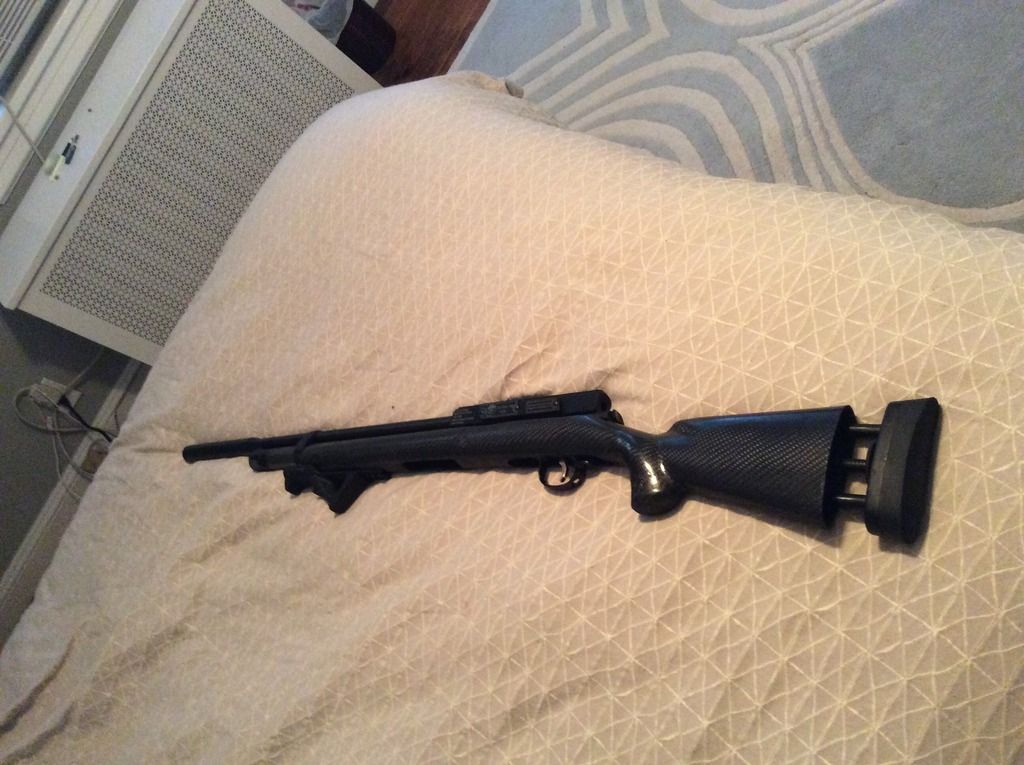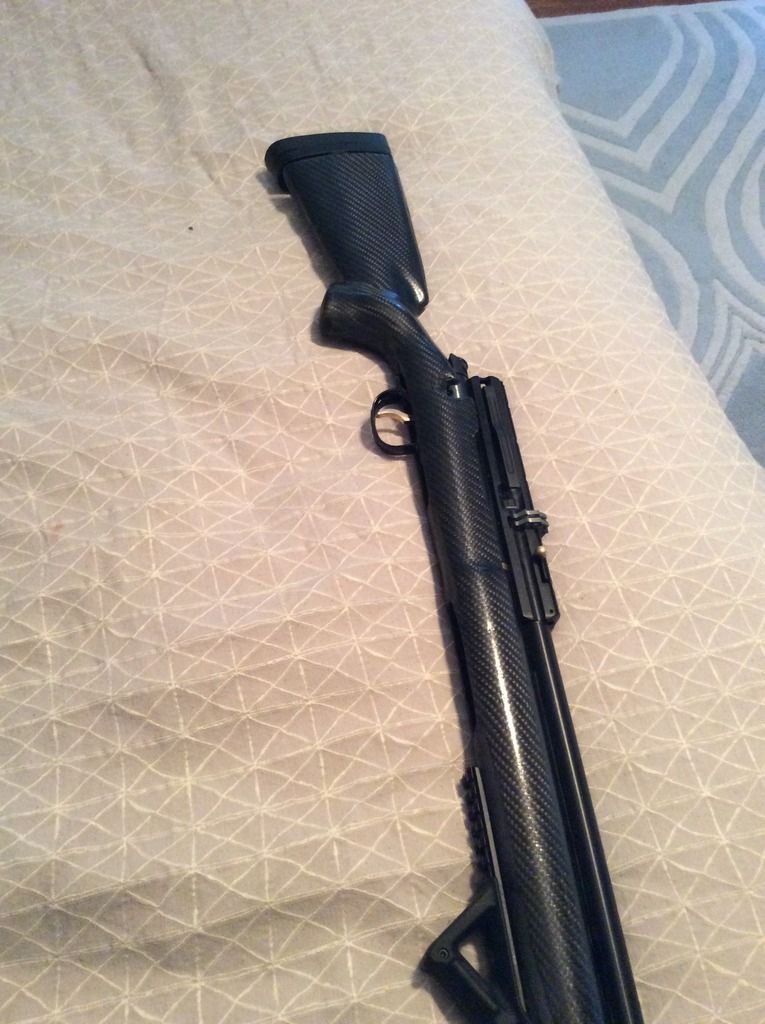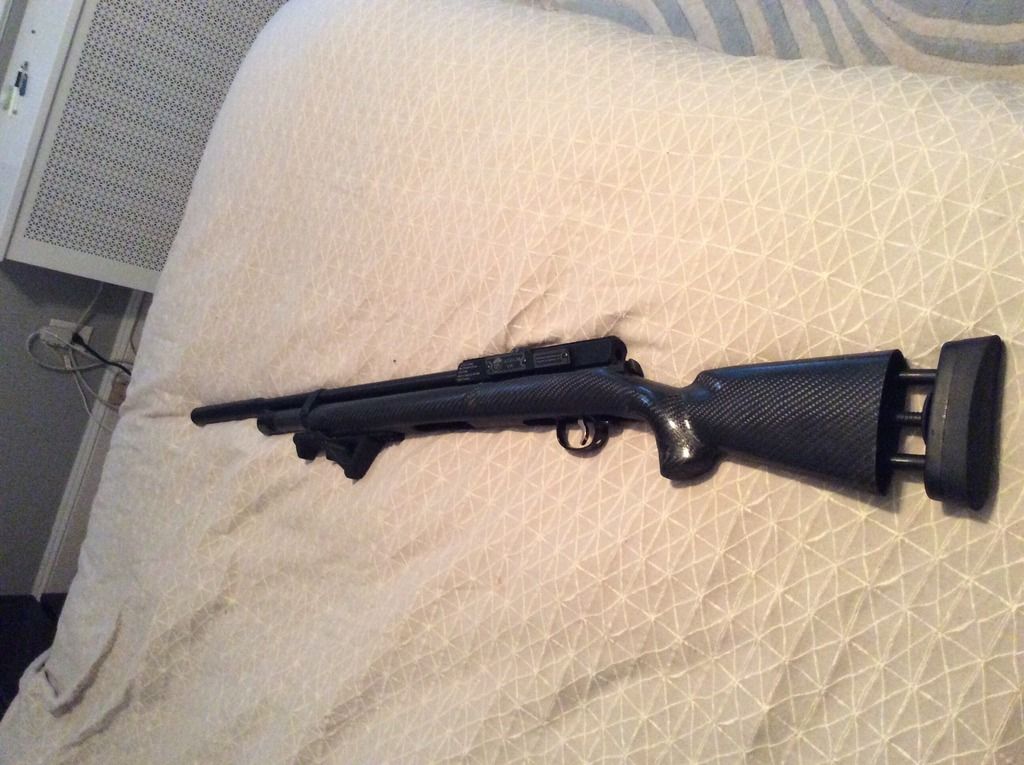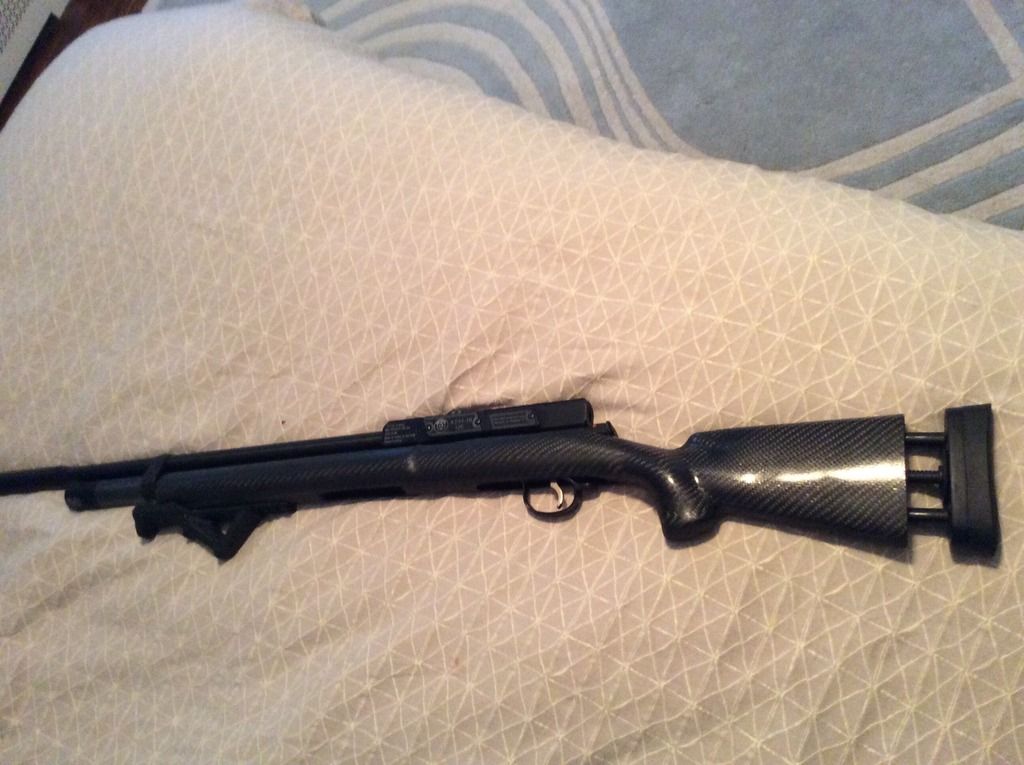I have been working on a custom laminated stock out of birch plywood I'm excited to see if it will work for the bottle kit and hold up
Upvote 0
If you make diy prepreg, it is easy to cut into precise shapes or cut straight lights. People have a hard time trimming cf edges when they cut raw fabric or when they try to use it too soon after applying resin. Epoxy will stick to almost anything but immediately after it has been mixed, it is not tacky at all. It won't stick to the mold and you'll pull the fibers apart if you attempt to trim it."steeve"Thanks Zebra for the detailed post. Unfortunately I still don't see how you do it, esp joining the mold halves while the CF in each half is not cured and trimmed flush with the parting line. I picture the CF sticking up at random heights above the mold edges of both halves. trimming them flush while still not cured would be next to impossible. Then, reaching inside the rear of the stock to add reinforcement?..like building a ship in a bottle, but sticky/gooey as well.
I have some background working fiberglass, but CF is ten times stiffer and harder. I had a CF Shelby cobra body made by a sailboat company off a Factory-5 six-section mold. it is full of bubbles, pin holes and really big air pockets that did not stick to the mold. the doors and sides of the fenders are concave where they should be flat; looks like crap and the biggest reason I never finished the car. I wish there was someone like you nearby that I could apprentice with.
Where to begin...."steeve"Well that helps, but I can't load you tube vids on my old computer anymore for some reason; you tube just stopped working about a month ago. Got a new computer on the way though.
I'm not sure what you mean by home made Pre-preg..I thought it was a dry material that was activated with heat.
I still can't see how you can trim the CF while it is still wet in the mold. I know that the closest I could get to the mold line, and only if it is straight, is about .030" with scissors, even with tiny surgical scissors, and it would not be very straight either. I think I would have to grind it with a hand rotary tool after it was cured, but it would be difficult to perfectly match the parting line height without grinding into the mold parting surface in places. Even then, there would be small gaps when assembling the halves and the slightest amount of warpage would mean the halves will not line up in all places. Then how do you get inside to add bonding strips, esp without the halves moving out of whack. Maybe if you pin the mold halves together and leave the parts in the mold, then reach inside, from the open end with thin sticks to position the bonding strips. Is this close?
BTW, I had my own Mold and pattern business for 8 years, after working 4 years in a commercial pattern shop.(for green sand casting and investment molding). I think I would start a project like this by making a plaster mold off of a gun stock, using modeling clay up to the parting line for the first half. Plaster doesn't warp or shrink as much as fiberglass would, but it is not flexible, so there could be no back-drafted areas on the part, or it would not release. Sounds like a difficult and time consuming venture. I think I would rather digitize a stock, mill it out in two halves on a CNC machine, pocket the inside leaving about an 1/8" wall thickness with ribbing/bulkheads, glue the halves together, fill with high density foam, then re-pocket for the action. Any parting line mis-match could be easily sanded out and the finished part would still be very light.
"zebra"The Marauder is a great project gun. Why not have a go at making your own stock?
This is my latest day stock project. Not sure what action it will be bedded for yet. It was going to be for a Huntsman but now I am thinking my AT44 could benefit from a better stock.
I would be interested on how you did that to the stock. Beautiful
 [/color]
[/color] 


 [/IMG][/URL]
[/IMG][/URL]It might be a problem with that pic as I had trouble positing it last time. I'll try taking another to see."steeve"maybe you are limited to 4 pics per day?
I posted the first section of the tutorial in the General airguns section. It covers the mold making process which is the most important. The next section, which covers the lay-up for this stock, will be added tomorrow or Wednesday."airborne"That is beautiful and I am very interested on how you accomplished this look...
It's no problem. Just post pics of your cf stock when you're done. I always enjoy seeing other people's diy air rifle stock projects."airborne"OK I will go there and look, Thank You for sharing your talent with us